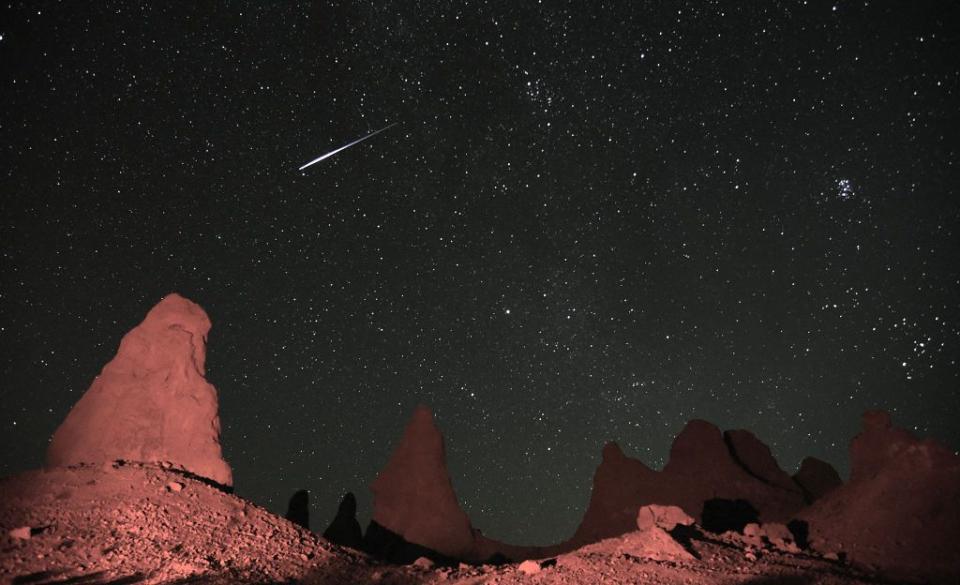The Perseid Meteor Shower Will Reach Its Peak This Week

From comets to eclipses, the night skies have already seen a lot of activity this summer, but there’s still time to catch one of the best astronomical events of 2020. The annual Perseid Meteor Shower—which reaches its peak from August 11-13 according to the American Meteor Society—features some of the fastest and brightest meteors visible from Earth, making it a favorite of professional and amateur astronomers alike. Here’s what you need to know to see this year’s shower.
What Is the Perseid Meteor Shower?
Every July and August the earth passes through debris left by the comet 109P/Swift-Tuttle, named for astronomers Lewis Swift and Horace Tuttle who discovered it during the summer of 1862. The bits of debris burn up when they interact with the earth’s atmosphere, creating the fiery Perseid meteors (aka shooting stars) we see from the ground. The Perseids get their name from the constellation Perseus which is the shower’s “radiant,” the celestial spot where meteors appear to come from.

When Is the Perseid Meteor Shower in 2020?
The Perseids are visible from the middle of July through most of August, but the shower’s peak is predicted for August 11-13 according to the American Meteor Society. During the busiest nights stargazers can expect to spot up to 75 meteors per hour.

When Is the Best Time and Place to Watch?
NASA says pre-dawn hours are optimal, though you may be able to see meteors as early as 10 p.m. Choose a rural viewing spot with as little light pollution as possible and plan to arrive about 45 minutes early to allow your eyes to adjust to the dark. Be sure to turn flashlights and phones off as light from even small sources can negatively affect night vision.

What Should I Bring?
Even though the Perseids appear during summer evenings, you should still pack a warm layer as well as a comfy outdoor blanket and pillows—the meteors are best viewed lying on your back looking upwards toward the darkest part of the sky. The Old Farmer’s Almanac suggests avoiding telescopes and binoculars because you’ll have a better chance of spotting shooting stars if you take in the whole sky instead of just part of it. Photographers should also bring camera equipment as the Perseids’ longer-than-average streaks of light and color can make for amazing night sky images.

You Might Also Like
